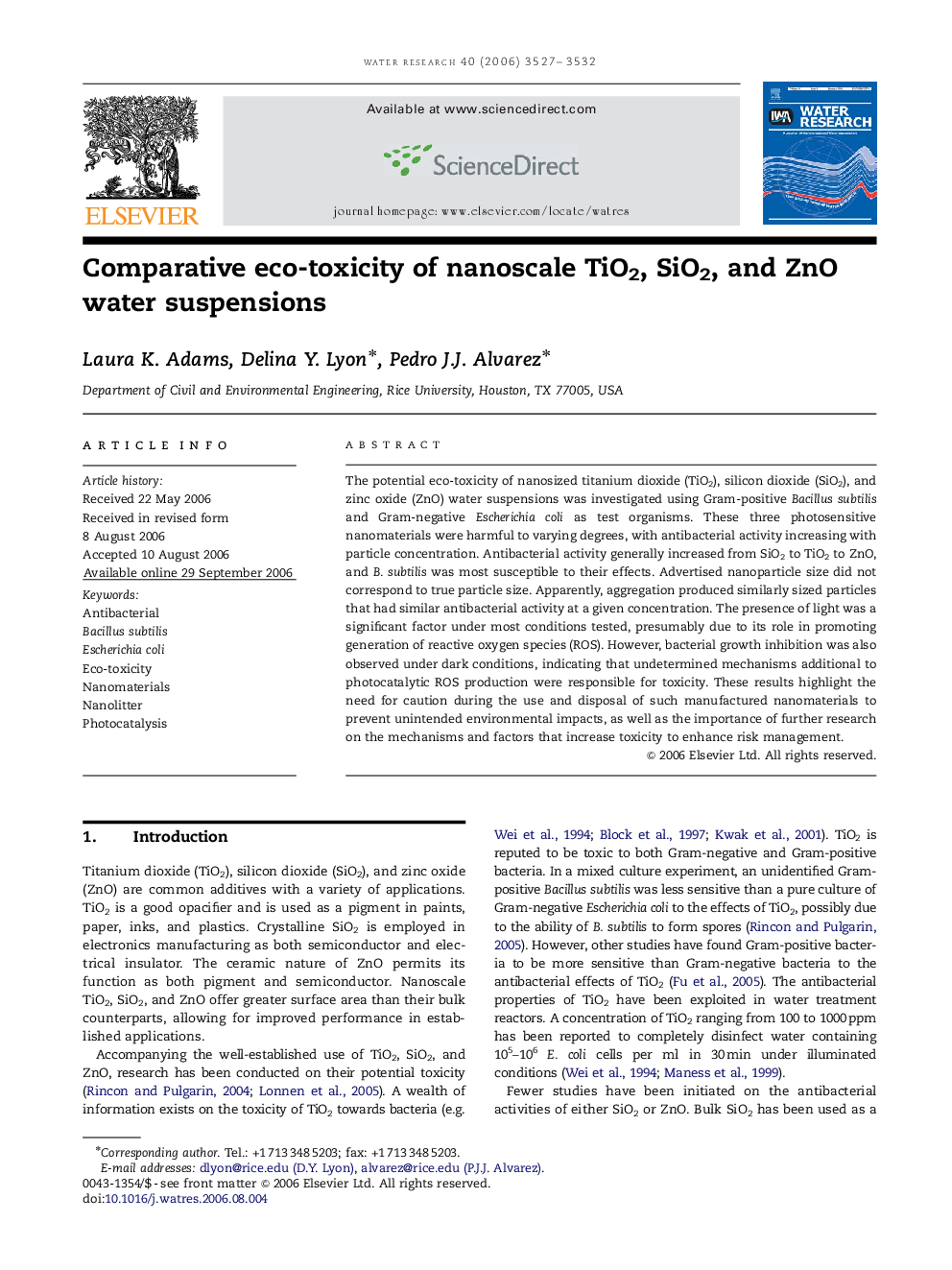| Article ID | Journal | Published Year | Pages | File Type |
|---|---|---|---|---|
| 4484525 | Water Research | 2006 | 6 Pages |
The potential eco-toxicity of nanosized titanium dioxide (TiO2), silicon dioxide (SiO2), and zinc oxide (ZnO) water suspensions was investigated using Gram-positive Bacillus subtilis and Gram-negative Escherichia coli as test organisms. These three photosensitive nanomaterials were harmful to varying degrees, with antibacterial activity increasing with particle concentration. Antibacterial activity generally increased from SiO2 to TiO2 to ZnO, and B. subtilis was most susceptible to their effects. Advertised nanoparticle size did not correspond to true particle size. Apparently, aggregation produced similarly sized particles that had similar antibacterial activity at a given concentration. The presence of light was a significant factor under most conditions tested, presumably due to its role in promoting generation of reactive oxygen species (ROS). However, bacterial growth inhibition was also observed under dark conditions, indicating that undetermined mechanisms additional to photocatalytic ROS production were responsible for toxicity. These results highlight the need for caution during the use and disposal of such manufactured nanomaterials to prevent unintended environmental impacts, as well as the importance of further research on the mechanisms and factors that increase toxicity to enhance risk management.
